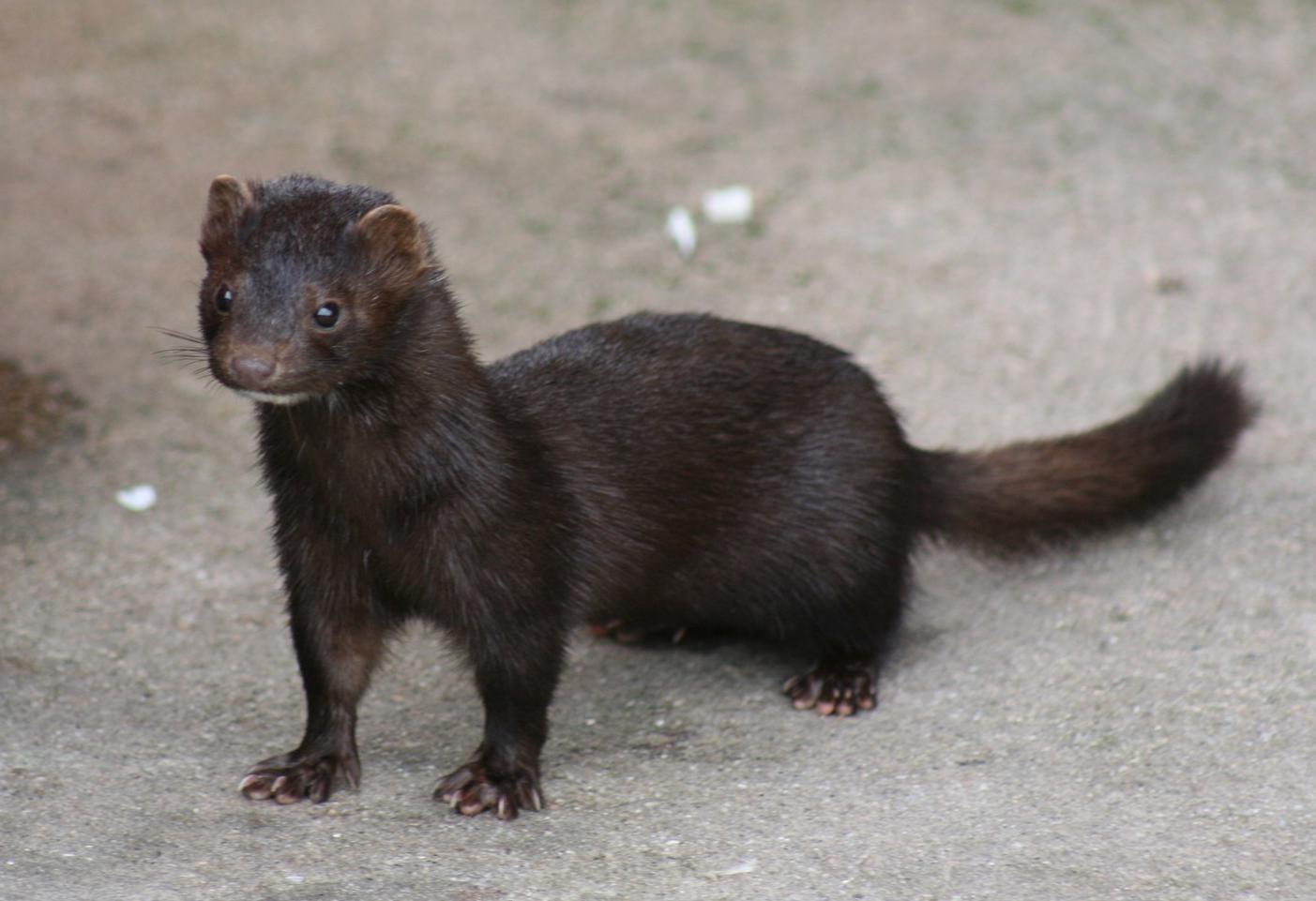Mink Oil on:
[Wikipedia]
[Google]
[Amazon]
 Mink oil is an oil used in medical and cosmetic products. It is obtained by the rendering of
Mink oil is an oil used in medical and cosmetic products. It is obtained by the rendering of
 Mink oil and its fatty acids are unique among animal-derived fats and oils. The unsaturated fatty acids in mink oil account for more than 75% of its fatty acid content, but the oil, nevertheless, has a greater oxidative stability (resistance to rancidity) than other animal or vegetable oils.
Mink oil and its fatty acids are unique among animal-derived fats and oils. The unsaturated fatty acids in mink oil account for more than 75% of its fatty acid content, but the oil, nevertheless, has a greater oxidative stability (resistance to rancidity) than other animal or vegetable oils.
 Mink oil is an oil used in medical and cosmetic products. It is obtained by the rendering of
Mink oil is an oil used in medical and cosmetic products. It is obtained by the rendering of mink
Mink are dark-colored, semiaquatic, carnivorous mammals of the genera ''Neogale'' and '' Mustela'' and part of the family Mustelidae, which also includes weasels, otters, and ferrets. There are two extant species referred to as "mink": the A ...
fat which has been removed from pelts bound for the fur industry.
In spite of the term on products labeled “mink oil“, many commercial versions of so-named leather conditioner contain no natural mink oil.
Characteristics
Mink oil is a source of palmitoleic acid, which possesses physical properties similar to humansebum
A sebaceous gland or oil gland is a microscopic exocrine gland in the skin that opens into a hair follicle to secrete an oily or waxy matter, called sebum, which lubricates the hair and skin of mammals. In humans, sebaceous glands occur ...
. Because of this, mink oil is used in several medical and cosmetic products. Mink oil is also used for treating, conditioning and preserving nearly any type of leather
Leather is a strong, flexible and durable material obtained from the tanning (leather), tanning, or chemical treatment, of animal skins and hides to prevent decay. The most common leathers come from cattle, sheep, goats, equine animals, buffal ...
.
Botanical alternatives to mink oil as a source of palmitoleic acid include macadamia oil
Macadamia oil, also known as macadamia nut oil, is a non-volatile oil extracted from the nuts of the macadamia tree (''Macadamia integrifolia''), indigenous to Australia. This oil is used in culinary applications as a frying or salad oil, and in c ...
(''Macadamia integrifolia'') and sea buckthorn oil
Sea buckthorn oil is a red-orange oil derived from sea buckthorn plants. The most commonly used species for this purpose is ''Hippophae rhamnoides''. Species belonging to this genus accumulate lipids in the mesocarp (the fruit pulp), so the oil ...
(''Hippophae rhamnoides''), both of which contain as much or more palmitoleic acid (17% and 19–29% respectively) than does mink oil (17%).
 Mink oil and its fatty acids are unique among animal-derived fats and oils. The unsaturated fatty acids in mink oil account for more than 75% of its fatty acid content, but the oil, nevertheless, has a greater oxidative stability (resistance to rancidity) than other animal or vegetable oils.
Mink oil and its fatty acids are unique among animal-derived fats and oils. The unsaturated fatty acids in mink oil account for more than 75% of its fatty acid content, but the oil, nevertheless, has a greater oxidative stability (resistance to rancidity) than other animal or vegetable oils.
See also
*Neatsfoot oil
Neatsfoot oil is a yellow oil rendered and purified from the shin bones and feet (but not the hooves) of cattle. "Neat" in the oil's name comes from an Old English word for cattle. Neatsfoot oil is used as a conditioning, softening and prese ...
, leather treatment
* Saddle soap
Saddle soap is a compound used for cleaning, conditioning, and protecting leather. It typically contains mild soap, softening ingredients such as lanolin, and preservatives such as beeswax. It is commonly used on leather footwear, saddles, and ...
, leather cleaning and conditioning
* Antipruritic
Antipruritics, abirritants, or anti-itch drugs, are medications that inhibit itching (Latin: ''pruritus'').
Itching is often associated with sunburns, allergic reactions, eczema, psoriasis, chickenpox, Fungal infection in animals, fungal infections ...
, as the oil is often an ingredient in insect bite-reliever sticks
References
{{Reflist Animal fat products Leather